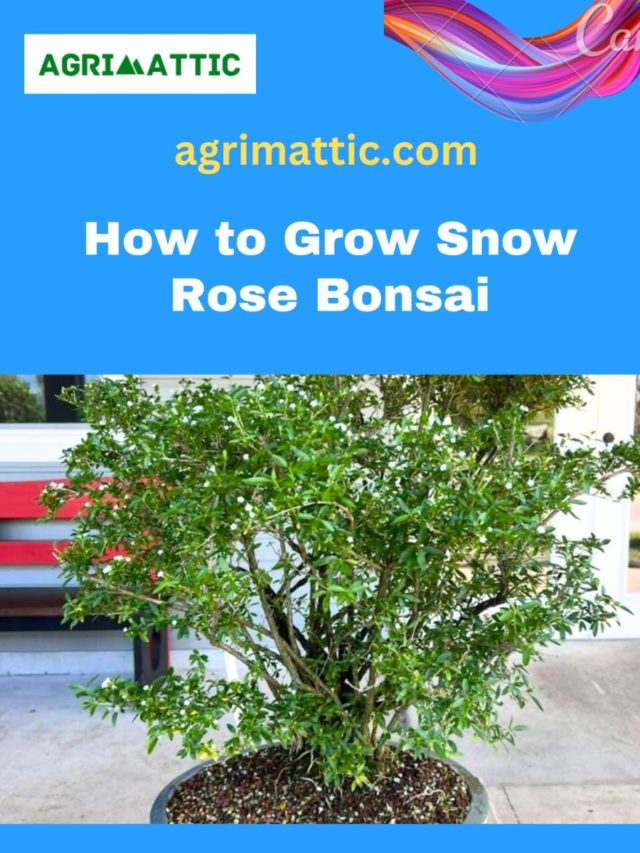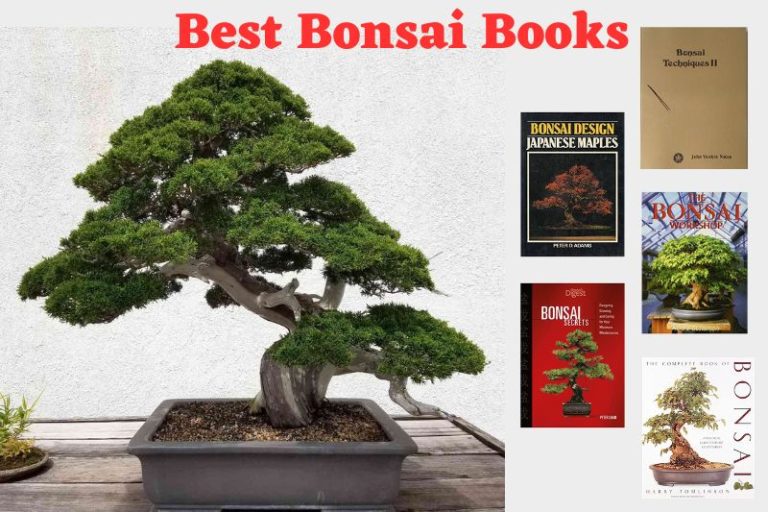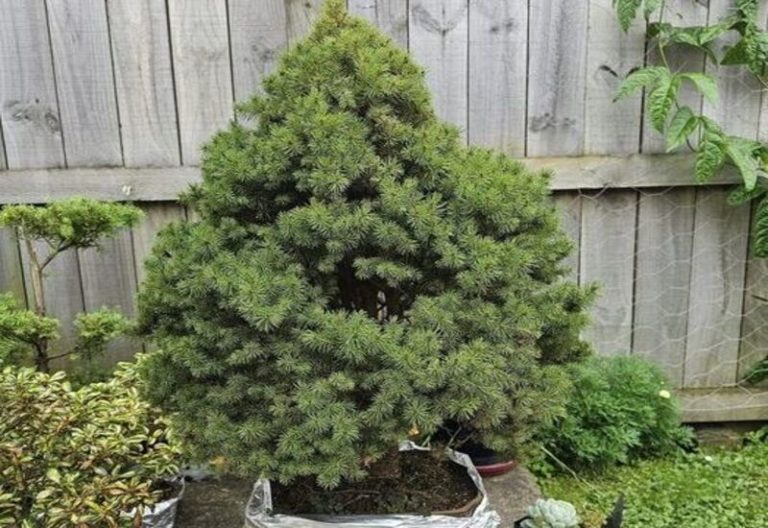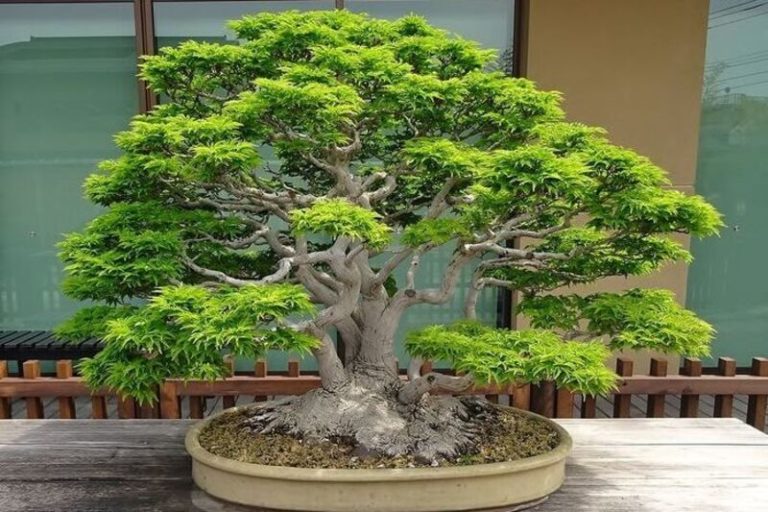Snow Rose Bonsai : A Beautiful and Hardy Addition to Your Bonsai Collection
Because of its distinctive qualities and beautiful look, snow rose bonsai, also known as Serissa Bonsai, is a preferred option among bonsai aficionados. The snow rose bonsai is a compelling addition to any bonsai collection due to its modest stature, glossy foliage, and bright blossoms. The care and style concerns for snow rose bonsai will be covered in this article, making it a great option for both novice and seasoned bonsai gardeners.
What is Snow Rose Bonsai?
Snow Rose Bonsai, also known as Serissa Bonsai, is a little tree with small, glossy leaves and colorful star-shaped blooms. Its cold tolerance and endurance make it appropriate for a variety of climes. Watering, fertilizing, trimming, and styling are all important for its proper development. Snow Rose Bonsai, which may be displayed inside or outdoors depending on the temperature, is a favorite option among bonsai aficionados due to its distinct traits and lovely beauty.
Types of Snow Rose Bonsai
There are two main plant species that are commonly known as Snow Rose Bonsai:
- Serissa foetida: Serissa foetida, also known as the Tree of a Thousand Stars, is a tiny, evergreen shrub native to East Asia. It produces white, pink, or purple star-shaped blooms on tiny, glossy foliage. The ability of Serissa foetida to withstand low temperatures makes it appropriate for bonsai cultivation in cooler climates.
- Serissa japonica: Serissa japonica, also known as Japanese Serissa, is another species of Serissa that is frequently used for bonsai. It shares similar characteristics with Serissa foetida, including compact, lustrous leaves and white, pink, or purple star-shaped flowers. Additionally cold-tolerant, Serissa japonica can be cultivated as a bonsai in colder climates.
Both Serissa foetida and Serissa japonica are popular choices for bonsai due to their small size, attractive foliage, and colorful flowers. They require similar care and maintenance, including proper watering, fertilizing, pruning, and styling to thrive as bonsai specimens.
Snow Rose Bonsai and Its Symbolism
Like many other bonsai trees, Snow Rose Bonsai carries symbolic meanings and cultural significance. Here are some common symbolic meanings associated with Snow Rose Bonsai:
- Beauty and Elegance: Snow Rose Bonsai is admired for its small, glossy leaves, and vibrant flowers, which are considered symbols of beauty and elegance. The delicate appearance of the bonsai tree, with its petite foliage and graceful flowers, represents the appreciation of natural aesthetics and the pursuit of refined beauty.
- Resilience and Endurance: Snow Rose Bonsai is known for being hardy in cold weather and lasting for a long time. It can also handle rough weather. As a bonsai tree, it is a sign of toughness and endurance. It reminds us how important it is to keep going even when things are hard.
- Balance and Harmony: Bonsai cultivation is an art form that focuses on the balance and unity between nature and human involvement. With its carefully trimmed and shaped branches, the Snow Rose Bonsai reflects the ideas of balance and harmony. It shows how important it is to have balance in our lives and to live in harmony with nature.
- Patience and Zen: To mold the tree into the desired shape, bonsai cultivation involves time, patience, and careful caring. Snow Rose Bonsai represents the values of patience and Zen, as it reminds us of the necessity of taking our time and being thoughtful in our work, as well as the peace found in connecting with nature.
- New Beginnings: With its vivid blooms that bloom in groups, Snow Rose Bonsai may also represent new beginnings and fresh begins. It symbolizes the cycle of life and nature’s rebirth, urging us to embrace change, develop, and progress.
Snow Rose Bonsai’s symbolic connotations might vary according on cultural beliefs and personal perceptions. Snow Rose Bonsai, on the other hand, is frequently praised for its beauty, resilience, balance, patience, and symbolism of fresh beginnings, making it a significant and treasured option for bonsai aficionados.
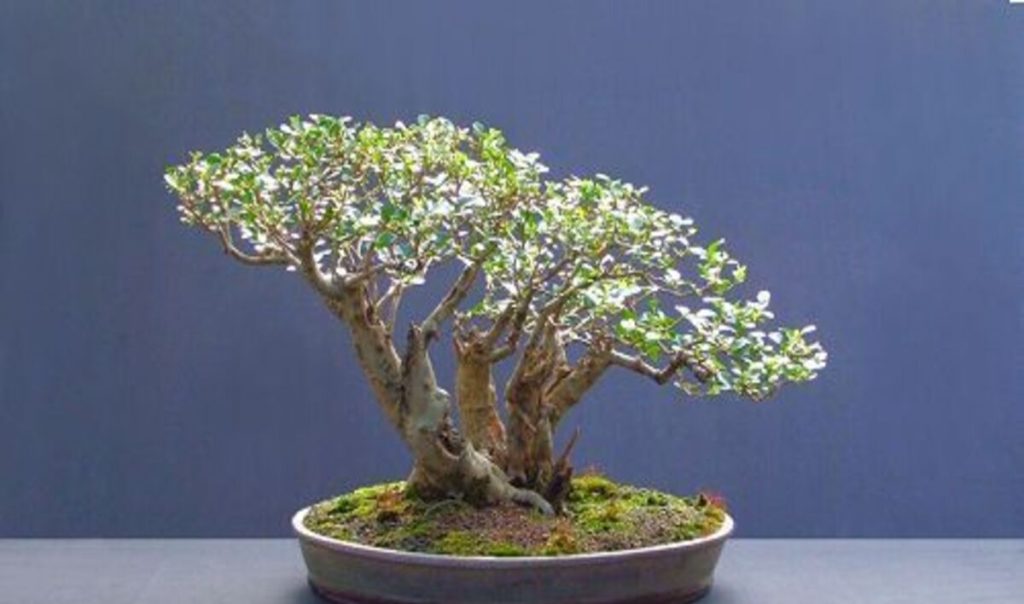
Characteristics of Snow Rose Bonsai
The Snow Rose Bonsai, sometimes called the Serissa Bonsai, stands out from the crowd thanks to its many distinguishing features. Some distinguishing features of Snow Rose Bonsai include:
- Small Size: Snow Rose Bonsai is a little tree that is well-suited to bonsai gardening. Because of its diminutive form, it may be cultivated in limited locations such as interior settings or small outdoor gardens.
- Small, Glossy Leaves: Snow Rose Bonsai has tiny, glossy, oval-shaped leaves that are alternately positioned along the branches. The foliage are typically dark green in color, giving the bonsai tree a lush and vivacious appearance.
- Vibrant Flowers: The vibrant blossoms of Snow Rose Bonsai are one of its distinguishing characteristics. When in blossom, the star-shaped, multicolored flowers, which include white, pink, and purple, lend a splash of color and beauty to the bonsai tree.
- Cold Hardiness: Snow Rose Bonsai is renowned for its frigid tolerance, making it appropriate for bonsai cultivation in colder climates. It can withstand temperatures as low as 15°F (-9°C), making it a popular option among bonsai devotees living in regions with colder climates.
- Branched Trunks: Snow Rose bonsai typically develops a multi-trunk or clump-style growth pattern with contorted and gnarled branches, which contributes to its artistic and unique appearance. The branches can be pruned and wired to produce various designs and shapes, allowing for artistic expression in bonsai design.
- Moderate Growth Rate: Snow Rose Bonsai has a moderate growth rate, making maintenance and shaping simpler. It is not a fast-growing tree, allowing bonsai devotees to more easily control its growth and maintain the desired size and shape.
- Indoor/Outdoor Flexibility: Depending on the climate and season, Snow Rose Bonsai can be grown indoors or outdoors. It can flourish as an indoor bonsai in well-lit environments with appropriate care, or it can be grown outdoors during the growing season in warmer climates.
- Pruning and Styling Opportunities: Snow Rose Bonsai responds well to pruning and styling, enabling bonsai devotees to construct a variety of bonsai styles, including formal upright, informal upright, and cascade. Pruning and wiring techniques can be used to give the bonsai tree the desired form and personality by sculpting the branches and trunks.
Snow Rose Bonsai is favored by bonsai enthusiasts for its unique characteristics and aesthetic appeal due to its small size, small glossy leaves, vibrant flowers, cold hardiness, branched trunks, moderate growth rate, indoor/outdoor adaptability, and pruning and styling opportunities.
How to Grow Snow Rose Bonsai
Growing Snow Rose bonsai can be an enjoyable and rewarding experience. The following are general guidelines for growing Snow Rose Bonsai:
- Choose the Right Location: Depending on the climate and season, Snow Rose Bonsai can be grown indoors or outdoors. If cultivated indoors, position the bonsai tree near a south-facing window or in a well-lit area with sufficient sunlight. If grown outdoors, select a location with partial shelter, as Snow Rose Bonsai prefer brilliant, indirect sunlight and protection from direct sunlight.
- Use Well-Draining Soil: Snow Rose Bonsai prefers well-draining soil to prevent root decay caused by waterlogging. Use a bonsai soil mixture composed of Akadama, pumice, and lava rock or perlite that drains well.
- Water Regularly: The heath of a Snow Rose Bonsai requires regular irrigation. When the top inch of soil feels slightly dry, water the bonsai tree thoroughly, but avoid overwatering. To prevent waterlogging, allow excess water to percolate out of the bottom of the container.
- Fertilize Appropriately: During the growing season, typically from spring to autumn, Snow Rose bonsai requires regular fertilization. Utilize a balanced liquid fertilizer designed specifically for bonsai trees, and observe the manufacturer’s administration rates and frequency recommendations.
- Prune and Wire: The shape and scale of a Snow Rose Bonsai must be maintained through regular pruning and wiring. Pruning the branches and foliage will promote back-budding and create a denser, more compact canopy. Use wire to shape the branches and trunks, but avoid injuring the delicate branches by wrapping the wire too tightly.
- Protect from Cold Temperatures: The Snow Rose Bonsai is cold-tolerant, but must be protected from extremely low temperatures. If cultivated outside in harsher climates, safeguard the bonsai tree from frost and freezing temperatures by relocating it to a protected area or covering it with frost cloth.
- Repotting: Every two to three years, Snow Rose bonsai should be repotted to renew the soil and encourage healthy root development. Before the bonsai tree initiates its active growth phase in early spring, repot it.
- Pest and Disease Control: Watch out for common bonsai pests like aphids, spider mites, and scale insects, and use the proper pesticides or miticides to get rid of them as soon as you see them. In addition, keep an eye out for indicators of illnesses like fungal infections and implement controls to stop their spread if you find any.
- Winter Care: Particular attention must be paid to a Snow Rose Bonsai during the colder months. If the bonsai tree is being grown outside in a colder environment, it has to be moved to a protected place or winter protection measures used, such as a cold frame or mulching, to prevent damage from the cold.
- Patience and Care: The cultivation of a Snow Rose Bonsai requires perseverance, care, and meticulousness. Be consistent with hydrating, fertilizing, pruning, and shaping, and be mindful of seasonal and climate changes.
Snow Rose Bonsai can flourish and develop into a gorgeous and artistic bonsai tree with appropriate care and attention. Ensure the best growth and health of your Snow Rose Bonsai by researching and understanding its specific care requirements.
Benefit of Snow Rose Bonsai
Snow Rose Bonsai, also known as Serissa foetida, is a popular option among bonsai enthusiasts due to its unique qualities and advantages. Here are some advantages of cultivating Snow Rose Bonsai:
- Aesthetically Pleasing: The Snow Rose Bonsai is renowned for its delicate and elegant appearance, with tiny leaves, delicate branches, and white or pink blossoms. It can be a gorgeous addition to any indoor or outdoor location and is frequently admired for its artistic appeal.
- Small Size: Snow Rose Bonsai is a miniature bonsai tree, making it suitable for small spaces such as condominiums, balconies, and terraces. It can also be displayed as a tabletop bonsai, bringing an element of nature into your domestic living space.
- Longevity: The Snow Rose Bonsai is renowned for its longevity; with appropriate care, it can survive for decades. It could be a significant and enduring addition to your bonsai collection, passed down from generation to generation.
- Therapeutic and Relaxing: Regarding Snow Rose Bonsai can be a calming and meditative activity that provides tension relief and serenity. As you sculpt and design the bonsai tree according to your vision, it can also be a form of self-expression and creativity.
- Educational and Learning Experience: Growing Snow Rose Bonsai can be a highly educational and enlightening experience, as it requires understanding the tree’s specific requirements, learning about pruning and wiring techniques, and observing the tree’s growth and development over time. Bonsai cultivation can be a rewarding hobby that enables you to perpetually learn and develop your skills.
- Connection with Nature: With a Snow Rose Bonsai, you can transport the splendor of the outdoors right into your home. Even in a busy city, it has the potential to bring peace and a closer relationship with nature.
- Personal and Unique: The way you prune and shape your Snow Rose Bonsai reflects your sense of aesthetics and style. Each Snow Rose Bonsai is an original work of art since it has its own personality and growing habit.
The aesthetic appeal, tiny size, lifespan, therapeutic value, educational experience, connection with nature, and personal uniqueness of Snow Rose Bonsai are only a few of the advantages. Snow Rose Bonsai, with appropriate care and attention, may be a pleasant addition to your bonsai collection, bringing joy and fulfillment into your life.
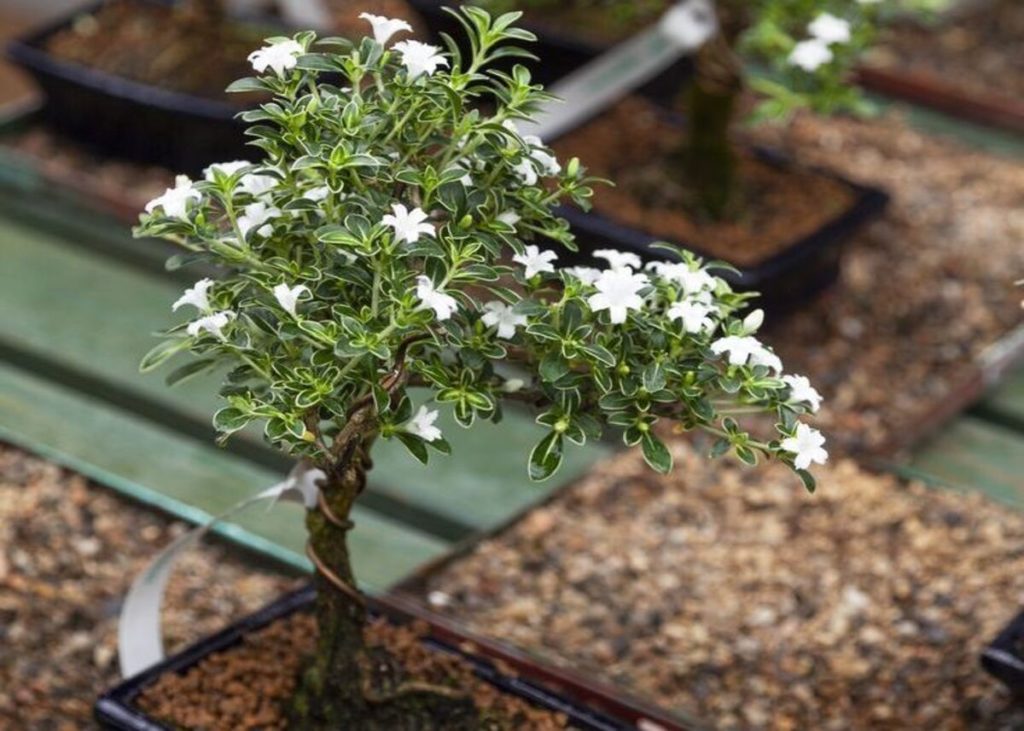
Styling and Design of Snow Rose Bonsai
Snow Rose Bonsai styling and design, also known as Serissa foetida, is a significant part of bonsai growth. The tree is shaped and trained to create an aesthetically pleasing and harmonious arrangement. Here are some styling and design recommendations for Snow Rose Bonsai:
- Choose the Right Bonsai Style: Snow Rose Bonsai can be fashioned in a variety of traditional bonsai styles, including formal upright, casual upright, slanting, cascading, semi-cascade, literati, and windswept, among others. Consider the natural qualities of your Snow Rose Bonsai, such as its trunk, branches, and foliage, and choose a bonsai design that matches its distinct traits.
- Prune and Shape Regularly: Regular pruning is essential for shaping and maintaining the desired form of Snow Rose Bonsai. Use sharp bonsai pruning shears to trim the branches and foliage, removing any unwanted growth or crossing branches. Prune selectively to create a balanced and aesthetically pleasing silhouette, keeping in mind the overall design and style you want to achieve.
- Wire for Shape and Position: Wiring is a common technique used in bonsai styling to shape and position the branches of Snow Rose Bonsai. Use bonsai training wire to gently bend and guide the branches into the desired positions. Be careful not to apply too much pressure or bend the branches too sharply, as it can damage the tree. Monitor the growth of the branches and adjust the wiring as needed to maintain the desired shape.
- Consider Proportions and Balance: Proportions and balance are crucial in bonsai styling and design. Aim for a balanced composition with harmonious proportions between the trunk, branches, and foliage. Avoid having overly long or overly short branches or an imbalanced tree structure. Step back regularly and assess the overall design from different angles to ensure a visually pleasing and well-balanced arrangement.
- Enhance Nebari and Deadwood Features: Nebari, or the surface roots of Snow Rose Bonsai, is an important element in bonsai design. Expose and enhance the nebari by carefully removing soil from the base of the tree and trimming any excessive roots. Additionally, you can create deadwood features on the trunk and branches by carefully removing the bark and shaping the wood with bonsai tools, adding character and interest to the design.
- Consider Pot Selection: The choice of pot for Snow Rose Bonsai can greatly impact its overall design. Consider the size, shape, and color of the pot in relation to the tree’s style, size, and color. Traditional earth-toned pots or glazed pots can be used to enhance the aesthetic appeal of Snow Rose Bonsai, but ultimately, choose a pot that complements your bonsai’s design and style.
- Patience and Vision: Styling and designing Snow Rose Bonsai is a process that requires patience and a clear vision. It takes time for the tree to develop and mature into the desired form. Be patient and regularly monitor the growth and development of your Snow Rose Bonsai, making adjustments as needed to achieve your envisioned design.
Styling and designing Snow Rose Bonsai involves careful pruning, shaping, wiring, considering proportions and balance, enhancing nebari and deadwood features, selecting an appropriate pot, and having patience and vision. With time and effort, you can create a visually appealing and harmonious bonsai composition that showcases the unique beauty of your Snow Rose Bonsai tree.
How to Care and Maintain Snow Rose Bonsai
Proper care and maintenance are crucial for the health and longevity of Snow Rose Bonsai, also known as Serissa foetida. Here are some essential tips on how to care and maintain Snow Rose Bonsai:
- Sunlight: Snow Rose Bonsai demands direct, strong sunshine. Put it somewhere with filtered sunshine or moderate shade. Avoid exposing it to direct sunlight for long periods of time, since this can burn the leaves and harm the tree.
- Watering: Snow Rose Bonsai needs soil that is somewhat damp but drains well. Water it on a daily basis to maintain the soil equally wet but not inundated. Overwatering can cause root rot, so avoid it. Watering frequency should be adjusted based on the weather and humidity conditions in your location.
- Humidity: A humid atmosphere is ideal for Snow Rose Bonsai. Mist the leaves with water on a regular basis to promote humidity around the tree. To maintain the correct humidity levels, you may also set a humidity tray filled with water near the bonsai or use a room humidifier.
- Fertilization: Snow Rose Bonsai need fertilizing on a regular basis to ensure good development. During the growth season, apply a balanced liquid or granular bonsai fertilizer according to the manufacturer’s directions. Reduce or eliminate fertilizer during the winter dormant period.
- Pruning: Snow Rose Bonsai must be pruned on a regular basis to keep its form and size. Trim back new growth to keep the correct shape and avoid lanky growth. To maintain the tree healthy, remove any dead, yellowing, or diseased leaves or branches as soon as possible.
- Pests and Diseases: Keep a vigilant watch out for pests and diseases, such as aphids, spider mites, scale insects, and powdery mildew, on your Snow Rose Bonsai. Use insecticidal soap or neem oil in accordance with the instructions provided by the manufacturer to treat infestations as soon as possible.
- Winter Care: The Snow Rose Bonsai is not frost-tolerant and requires winter protection. Bring it inside or to a protected area where it will be protected from frigid temperatures. Reduce irrigation during dormancy and refrain from fertilizing until spring.
- Repotting: Every one to two years, typically in the spring or early summer, Snow Rose bonsai should be replanted. Use well-draining bonsai soil and prune the roots carefully to promote healthy roots. Repotting improves nutrient absorption and prevents root-bound problems.
- Training and Styling: Maintaining the desired shape and manner of a Snow Rose bonsai requires regular pruning and training. Wire and prune the branches as necessary to achieve the desired shape, and modify the wiring frequently to prevent the wire from slicing into the bark.
- Observation and Careful Monitoring: Observe your Snow Rose bonsai frequently for any changes in growth, health, or overall condition. Adjust your care regimen accordingly, taking into account variables such as varying weather conditions, seasonality, and the bonsai tree’s specific requirements.
Caring and maintaining Snow Rose Bonsai requires attention to sunlight, watering, humidity, fertilization, pruning, pest and disease control, winter care, repotting, training and styling, and careful monitoring. With proper care, Snow Rose Bonsai can thrive and be enjoyed as a beautiful and healthy bonsai tree for years to come.
Snow Rose Bonsai Care Sheet
| Aspect | Care Tips |
|---|---|
| Sunlight | Place in bright, indirect sunlight. Avoid intense afternoon sunlight. |
| Watering | Keep soil consistently moist, avoiding waterlogging. Water when top inch of soil is slightly dry. |
| Humidity | Prefers moderate to high humidity. Use a humidity tray or mist leaves regularly. |
| Fertilization | Use balanced, water-soluble fertilizer during growing season. Reduce in dormant season. |
| Pruning | Regularly prune to maintain shape and size. Pinch back new growth and remove dead leaves. |
| Pests and Diseases | Watch for pests and diseases. Treat promptly with appropriate methods. |
| Winter Care | Protect from cold temperatures. Place indoors or insulate with frost cloth/bubble wrap. Reduce watering. |
| Repotting | Repot every 2-3 years in well-draining soil during spring or fall. Prune roots and foliage. |
| Training and Styling | Shape with wire or clip-and-grow techniques. Prune regularly for desired form. |
| Observation and Monitoring | Regularly observe for signs of stress, pests, or diseases. Adjust care as needed. |
Please note that specific care requirements may vary depending on your local climate and growing conditions, so always monitor your Snow Rose Bonsai closely and adjust care practices accordingly.
Conclusion
Serissa foetida, more often known as Snow Rose Bonsai, is a lovely and delicate bonsai tree that needs regular care and attention to flourish. In addition to the basic needs of water and sunshine, Snow Rose Bonsai also require proper humidity, fertilization, trimming, and protection from pests and diseases. It also needs regular repotting, training, and close observation of its development and health to thrive.
Snow Rose Bonsai, with appropriate care and attention, may become a wonderful addition to your bonsai collection and offer joy and beauty to your living space for years to come. Good luck with your planting!
FAQ:
Q: What is Snow Rose Bonsai?
A: Snow Rose Bonsai is a small and delicate bonsai tree with tiny white flowers and small, dark green leaves.
Q: What are the types of Snow Rose Bonsai?
A: Types of Snow Rose Bonsai include Single-Trunk Style, Multi-Trunk Style, Informal Upright Style, Slanting Style, and Literati Style.
Q: How do I care for Snow Rose Bonsai?
A: Care for Snow Rose Bonsai involves providing bright, indirect sunlight, well-draining soil, regular watering, humidity, fertilizing, pruning, protection from pests and diseases, winter care, repotting, and training as needed.
Q: Can Snow Rose Bonsai be grown indoors?
A: Yes, Snow Rose Bonsai can be grown indoors with adequate sunlight, humidity, and care.
Q: How often should I water Snow Rose Bonsai?
A: Water Snow Rose Bonsai when the top inch of soil feels slightly dry, avoiding over-watering.
Q: Does Snow Rose Bonsai require pruning?
A: Yes, Snow Rose Bonsai requires regular pruning to maintain shape, promote healthy growth, and encourage ramification.
Q: Can Snow Rose Bonsai be kept outdoors?
A: Snow Rose Bonsai should be protected from freezing temperatures and is best kept indoors or in a sheltered location during winter.
Q: When should Snow Rose Bonsai be repotted?
A: Snow Rose Bonsai should be repotted every 1-2 years, typically in spring or early summer.
Q: Can Snow Rose Bonsai be styled and trained?
A: Yes, Snow Rose Bonsai can be styled and trained using techniques such as wiring and pruning.
Q: Are there any pests or diseases that affect Snow Rose Bonsai?
A: Yes, Snow Rose Bonsai can be susceptible to pests and diseases such as aphids, spider mites, scale insects, and powdery mildew. Regular inspection and prompt treatment are important.
Also Read:


